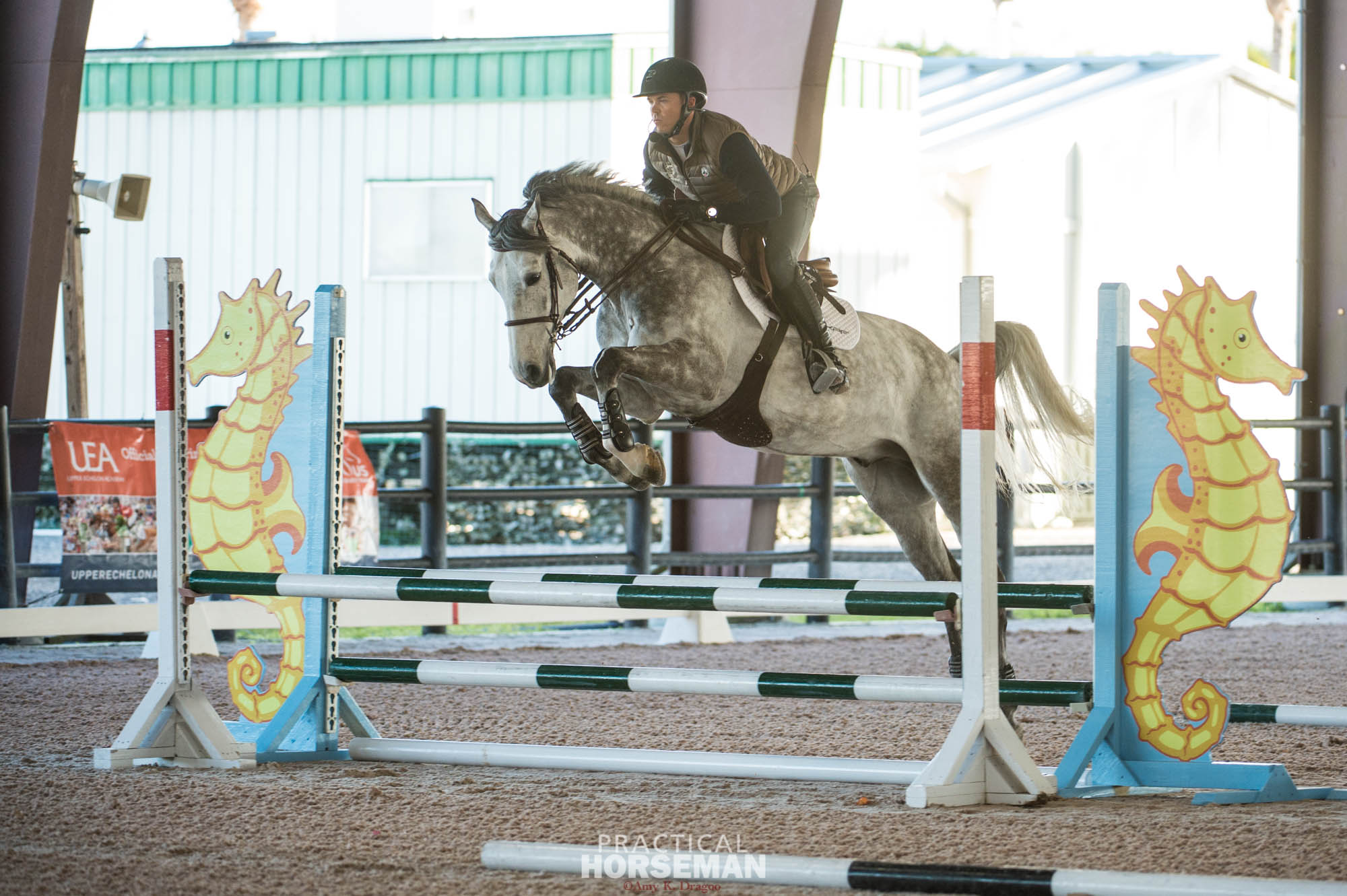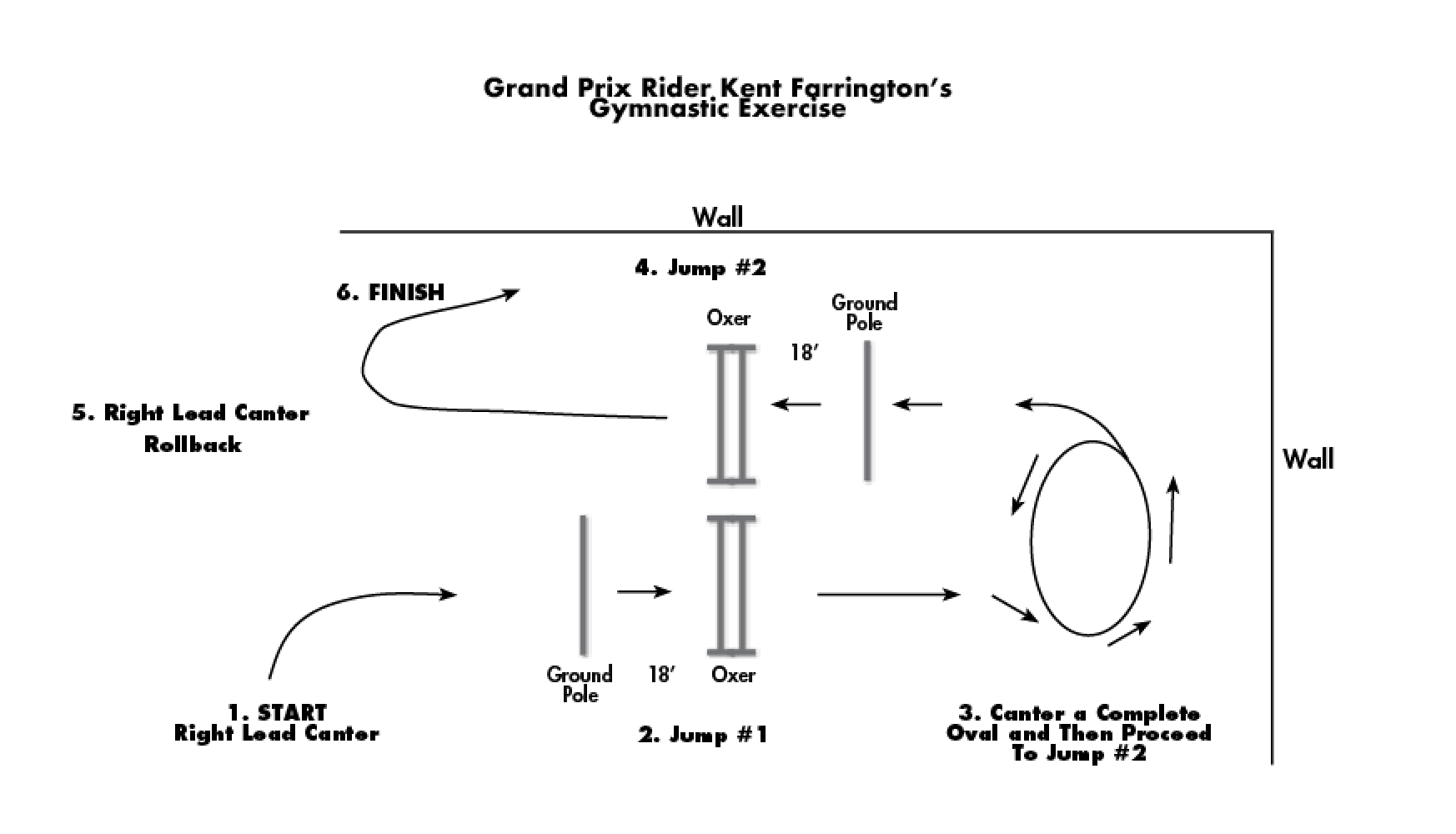
Current World No. 1-ranked jumper Kent Farrington gave a gymnastics demonstration before teaching two sessions on the subject during the second day of the George H. Morris Horsemastership Training Session. After horses and riders warmed up, they worked on different gymnastic exercises, progressively adding an additional exercise each time until the riders were jumping a gymnastics course.
Kent stressed the importance of jumping the least amount possible—just enough to ensure the horse learned the lesson. “I don’t want to jump extra jumps for fun, you’re just beating up on the horse for no reason,” he explained. “The least amount of jumping I can do to accomplish the lesson, that’s my goal.

One of Kent’s exercises was two oxers set side by side on the end of the short side of the ring. A ground pole was placed 18 feet in front of each oxer. Riders cantered in on the right lead over the first ground pole and oxer, circled to the left and approached the other ground pole and oxer on the left lead. Riders then executed a rollback turn to the right after the fence, turning in the opposite direction the horse would anticipate. The theme of rollback turns toward the rail carried over from the warm up and earlier gymnastic exercises.
“The horse sees the corner of the ring he thinks he knows what’s coming next,” said Kent of the landing after the second oxer. “That’s why you want to train him there and circle to the right.”

In every exercise and throughout both sessions, Kent encouraged the participants to take an individualized approach to training their horses. “Use each opportunity you can to make your horse better … you can break apart the exercise any way you like,” he said.
Decisions were left up to the riders—whether to circle and get a more forward canter before the jump; whether to do a downward transition on the landing side of the fence; whether to execute a flying or simple change—the focus was always to work on the weaknesses and to make ensure the horse was not anticipating, but listening to the rider.










